Make the most of one day in Ljubljana with our inside guide to Slovenia’s capital.
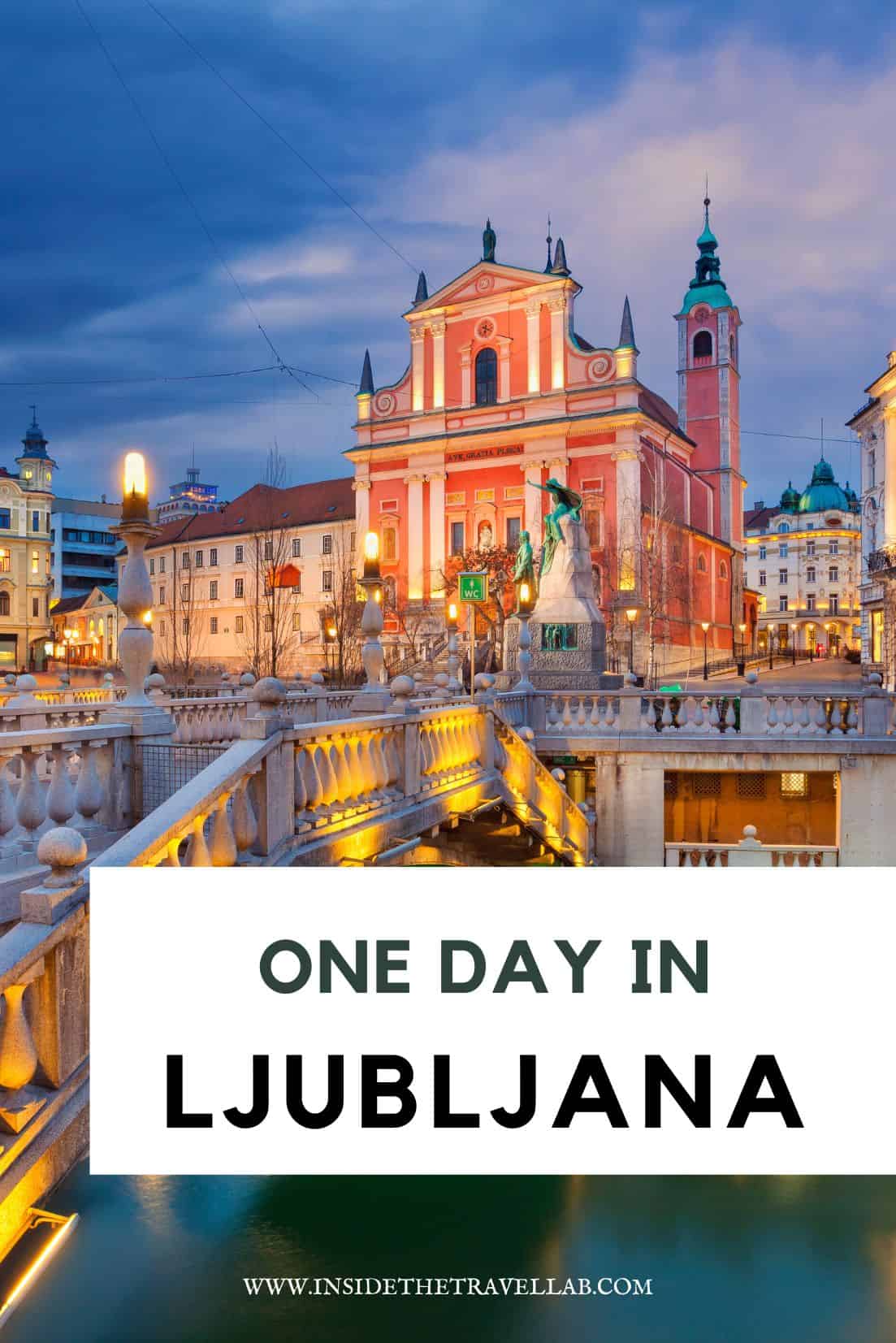
Why Should you Spend One Day in Ljubljana?
Swirling with dragons and medieval beauty, Slovenia’s capital also hits hard with punchy art and challenging history. Cosiness returns through heart-warming food, striking Art Deco and the common courtesy of arranging pretty much everything within walking distance.
Ljubljana was one of the cities of my dreams, my Atlantis. On my first visit, the taxi driver left me stranded on the outskirts in the rain – but let’s chalk that up as an occupational hazard. Thereafter, Ljubljana gave me enough experiences and inspiration to choke up my long-suffering hard drive.
The next time, I came with friends and family and we stayed the whole weekend.
Here’s our inside guide to how to spend one day in Ljubljana.
Ideally, of course, you should spend more than one day in Ljubljana. But if one day is all you have, then here is your 24 hour itinerary for Ljubljana.
If you book or buy through any of the links on this page, we may earn a small commission at no extra cost to you. We only recommend things we’d do ourselves. Cheers!
Where is Ljubljana
Ljubljana is the capital of Slovenia, which was part of Yugoslavia back in the 1980s. Before that it was part of the Habsburg Empire but before we disappear down the rabbit hole of history, let’s stop and make sure we’ve got our bearings: Slovenia lies landlocked between Italy, Croatia, Austria and Hungary.
How to Spend 24 Hours in Ljubljana
First, the good news. Central Ljubljana is compact and delightfully walkable. So, with only one day in Ljubljana, you can stroll or pace your way around and see quite a lot in quite a short time.
Skip tours and in-depth visits to museums if you’re short on time.
One Day in Ljubljana Itinerary Hour by Hour
You’re in the city and it’s time to make the most of your one day in Ljubljana!
I recommend going for the main attractions first, especially during high season, to avoid the crowds. Ready? Let’s go!
Ljubljana Castle
High on a mighty hill, this 900-year-old castle stands surrounded by green trees and accessible by funicular. You can take a free walking tour across the castle’s yard, but you will need to pay an entrance fee to visit the fortress.
Inside, visit an exhibition of Slovenian history that takes you back 200,000 years. Next, visit historical rooms like the Prison or the Chapel of St George and stop by the puppet museum for a bit of fun. There’s also an Escape Castle activity that starts at the info point. From there, the trail takes you around different points around the castle on your way to solving the puzzle and saving the dragon. Or , you can step into the Time Machine on the castle grounds and travel with a guide to different periods in the history of the city.
Next up, Ljubljana Cathedral
Not far from the castle, you will find Ljubljana Cathedral with its twin towers and green dome. At first sight, this church seems a little plain. However, the charm lies in the detail.
It’s dotted with information plaques and don’t forget the pairs of bronze doors that guard the southern and western sides of the cathedral. Plus Francesca Robba’s angels on the main altar.
Cross the Triple Bridge
Continue your Ljubljana itinerary across the famous Triple Bridge, where you will find a monastery famous for its frescoes and the largest statue of St Mary in Ljubljana. The façade and the altar are designed in the Baroque style, and the church is guarded by a 19th-century wooden door adorned with reliefs of women’s heads. Take your time and let the peaceful atmosphere of the place surround you. It’s been here for over 360 years after all.
Browse the National Gallery
Take an hour or so to stroll around Slovenia’s most important art gallery and discover its masterpieces. The permanent exhibition includes an impressive number of works belonging to one of Europe’s most important modernist painters, Zoran Mušič, as well as many sacred art pieces and works of art belonging to a series of Baroque artists. Overall, it spans the period from the High Middle Ages up to the late 20th century.
Here you will also find the original Fountain of the Three Carniolan Rivers belonging to Francesco Robba, a magnificent piece of Baroque art that used to be displayed in front of the Town Hall. Today, in its original place, you will find a copy.
Have Lunch at Ljubljana Central Market
A place to shop, a place to eat, a place to meet. Ljubljana’s Central Market consists of an open-air market, a covered market, and a few food shops scattered along the River Ljubljanica. Here you will find fresh fruit and vegetables and local produce, but the main attraction by far is the Open Kitchen concept.
This runs from mid-March to the end of October. If you visit during this period, you will find many Slovenian chefs cooking in the open air. It’s a great way to experience some authentic Slovenian culture.
Another favourite spot is xx but it’s a little further out of town for this one day Ljubljana itinerary.
Jota, Ljubljana’s Hearty Food
The icy winter winds had really started to bite when I first arrived in Ljubljana. It was cold.
That’s what makes jota so perfect. Warm, hearty, bursting with flavour from beans, pork cubes and sauerkraut (don’t laugh, it tastes better than it sounds,) this dish of jota was enought to sweep out the chill from my bones and usher in an interesting chat with the chef.
Delicious.
The National Museum of Slovenia
Step inside this 19th-century palace to look at a 60 000 year-old flute that was discovered on the Divije Babe excavation site. It belongs to the Neanderthal era and is a priceless exhibit. Another star in this museum’s collection is the famous Vače Situla, a ritual vessel belonging to the Early Iron Age.
Walk across Ljubljana’s Bridges
Ljubljana is famous for its pedestrian bridges that link the Old Town to the New across the River Ljubljanica. Walk off your lunch by crossing them all.
The Triple Bridge
Right in the middle of the city, you will find one of Jože Plečnik’s masterpieces. The Triple Bridge’s history began in 1842 when a simple stone bridge was built over the river to replace an old wooden one.
Between 1929 and 1932, however, this structure was turned into a triple bridge by one of Ljubljana’s most renowned architects, who added two side branches for pedestrian use and replaced the metal railings of the bridge with stone balustrades.
Today, it is a pleasure to walk across this unique architectural gem with its 20th-century lamps and beautiful stairways at its sides.
Roar Past Dragon Bridge
Another bridge that unites the banks of the Ljubljanica River is the Dragon Bridge, famous for its statues designed by architect Giorgio Zaninovich and produced in Vienna factory. The dragons shine beautifully in Ljubljana’s summer sun, but twilight ushers in a more gothic atmosphere.
Ljubljana has not one but four dragons guarding the, er “Dragon Bridge” (one of the earliest asphalt bridges in Slovenia, if you’re into that kind of thing.) From paper dragons in China to scarlet flag-emblazoning ones in Wales, to patriotic dragon slayers called George in England and Jordi in Catalunya, I’ve never quite worked out why so many different cultures have such similar takes on this mythical, fire-breathing creature. But anyway, I digress. Ljubljana’s dragon is a key symbol of the city.
Butchers’ Bridge
As you leave the Central Market and head for the Old Town, take Butcher’s Bridge. Yes, the name doesn’t sound romantic but this is Ljubljana’s bridge of love. You’ll see symbolic padlocks here, the keys dropped into the river.
The sculptures come from Slovenian artist Jakov Brdar and they show Adam and Eve being banished from Heaven. You’ll also see Prometheus running away after giving men the power of fire.
Just a note, young lovers. Resist throwing anything into the river – it isn’t very good for the fish!
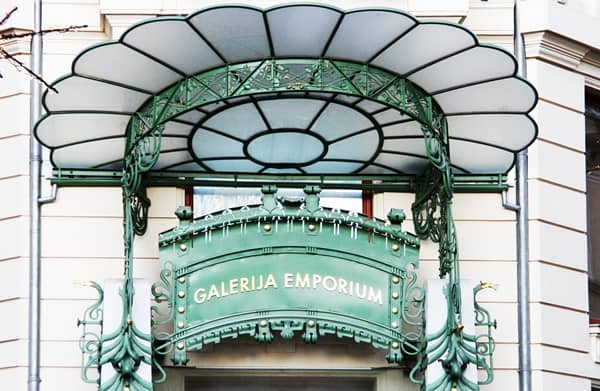
Feel the Vibe in Prešeren Square
As you walk around the main square in Ljubljana Old Town, you will notice that it is surrounded by a series of imposing Baroque and Art Nouveau palaces but no medieval buildings. This is because this section of the city was rebuilt after the devastating earthquake in 1895.
Architect Max Fabiani designed the square as the hub of four streets and in 2007, the city banned traffic other than tourist buses.
The most important monument is the bronze statue of the Slovene national poet, France Prešeren, a muse sitting behind him. On a building across from the square, awaits the statue of Julia Primic. She was the poet’s great love, and her statue was placed in this way so that she can face her lover for eternity.
It’s a good spot for an ice cream or cold lemonade in the afternoon. Don’t miss the Slovenian traditional dishes, which include the Kremna rezina, a delicious creamy cake, or the rolled dumplings called Štruklji – probably the best things you can try in this part of the world.
Go Back in Time in Republic Square
Slovenia once stood between the Soviet East and capitalist West, as part of Yugoslavia, and traces of that controversial era can still be found around the city. Republic Square is dominated by three imposing buildings, once considered the masterpieces of socialist modernist architecture.
The most important is the Slovenian parliament building surrounded by statues of workers. It is open to visitors on the second Saturday of every month.
Even if socialist architecture doesn’t appeal to you, the square is still worth visiting for its historic weight, as this is the place where Slovenia proclaimed its independence.
Explore Ljubljana’s Town Hall
If you still have enough time, don’t miss Ljubljana’s Town Hall with its Venetian style facade. Stop to see the replica of the Narcissus Fountain, which represents the three most important rivers in Slovenia. And, if you squint, it resembles Bernini’s fountain in Piazza Navona.
Inside the building, you can admire the 17th-century statue of Hercules with a lion and a grandiose statue of Ivan Hribar, a famous mayor of Ljubljana.
Take a Cruise around Ljubljana
A comfortable way to see the beautiful buildings of Slovenia’s capital involves hopping on a boat that takes you along Ljubljanica. I recommend this option, especially if you are visiting in the winter, as the boats are covered and heated, allowing you to see more without catching a cold.
See the Sunset from a Bench in Tivoli Park
Within walking distance of the town square, this beautiful park, with its large variety of trees and wonderful statues and fountains, is a great place to relax as the evening slowly descends over Ljubljana.
Feel how the heat of the day dissolves under the heavy branches of the trees, allowing the Slovenes to leave their homes for a walk in the park. Rest your feet and your mind here before you step into the city’s electrifying nightlife.
Get Artsy at Metelkova Mesto Culture Centre
One of the most renowned attractions of Ljubljana, this alternative cultural centre hosts a broad array of activities, from art performances to festivals. It is home to many clubs where you can listen to local and international underground DJs and artists.
Look out for poetry readings or movie nights and check the up to date arts timetable here.
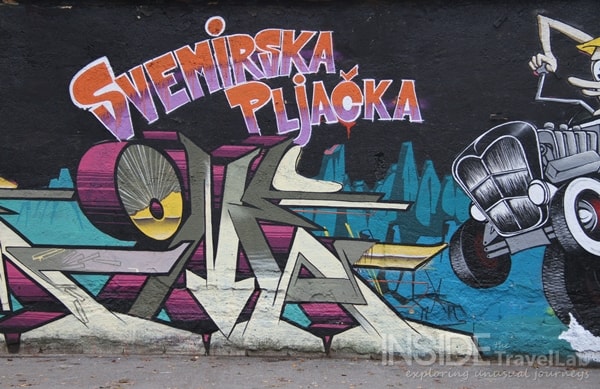
Where to Stay in Ljubljana
The great thing about Ljubljana is that as long as you’re somewhere near the Old Town, you’ll still be in the middle of things.
The hotels in the city are charming, and the good news is that they are much more affordable than accommodation in other European capitals.
- Try uHotel close to Prešeren Square for its spacious and clean rooms and general zen atmosphere.
- If you prefer something more classical, I’ve heard great things about the Grand Hotel Union, with a premium location in the city centre, impeccable service, and one of the best breakfasts in the city.
- And I loved the glamorous Antiq Palace Hotel & Spa.
- Worth it for the kookiness is a look at Hostel Celica, held in a former prison.
How to Get to Ljubljana
By Air
Ljubljana Airport is only a 20-minute drive from the city centre, so this is definitely the most comfortable way of travelling to the Slovenian capital. From here, you can take a shuttle bus, a taxi, or rely on public transport to take you closer to your accommodation.
The recommended shuttle service from the airport is GoOpti. Services run 24/7.
However, if you cannot find a convenient flight into Ljubljana, you have plenty of other airports nearby. For example, if you fly to Trieste in Italy, it’s only 130 kilometres to Ljubljana. The distance is even smaller if you land at Klagenfurt Airport in Austria – at 85 kilometres.
Slovenia has a well-developed road network, so you will have no problems if you decide to drive to Ljubljana from Italy, Austria, Hungary, or Croatia.
Airports at a Glance
The closest airport is Ljubljana Joze Pucnik Airport, which is 25km from the centre of the city. The next closest three are: Klagenfurt Airport in Austria which is 85 km away, Trieste Airport in Italy, 130 km away and Zagreb Airport in Croatia which is 140 km away.
By Train
You can book your train tickets up to two months in advance and for 2.20 euros, you can travel unrestricted between stations in Ljubljana’s main hub. Ticket discounts are available for families, and on weekends and public holidays, for those under 26, over 60, for groups and international visitors. More detailed information can be found at this website for rail information.
By Bus
To travel by bus, you can book your ticket online. Overall, it is fairly affordable. For bus information visit this website for bus information.
White Ljubljana
Apparently, Ljubljana earned this nickname thanks to the pale churches & mansions that appeared during the Habsburg era – but I have another theory.
Wander along Ljubljana’s riverside Christmas Markets and you’ll find that the mulled wine scorns the traditional reds found across the rest of Europe – for an unmistakeable Ljubljana white.
Getting Around Ljubljana & The Ljubljana Card
To travel around the centre of Ljubljana, you can mostly just use your own two feet. However, there are other options.
The Ljubljana card is valid for up to 72 hours and provides free transportation and access to the city’s major attractions. You’ll find a discount if you buy online.
Ljubljana Climate
Ljubljana has a continental climate specific to Central Europe, which is characterised by hot summers and moderately cold winters. The best time of the year to visit the city is from April to October, although the summer months, with their high temperatures (sometimes close to 40C), may seem too much for some visitors.
If you enjoy wrapping up warm, then you can enjoy spending one day in Ljubljana in winter with hot jota stew to warm you up and sparkly Christmas markets to chase away the gloom.
More than One Day in Ljubljana?
Where to Go from Ljubljana?
Ljubljana is a great starting point for day trips, with tours that take you to deep lakes and splendid castles. Travel to one of the following destinations and build on your one day in Ljubljana.
Lake Bled and Vintgar Gorge
If you’ve seen a single photo of Slovenia, it will probably be of Lake Bled. The view across the mountains from Bled castle will leave you speechless and, once you start your walk along Vintgar Gorge, you will be dazzled by this experience in the middle of unspoiled nature.
End your day in the medieval town of Skofja Loka with a great dinner and a lovely glass of wine, and you can say you’ve had the perfect day trip.
Lake Bohinj
Many tourists head straight for Lake Bled, leaving this gorgeous glacial lake cool and quiet, even during peak season. People come here to swim in the crystal-clear waters and relax in the middle of nature. You can spend the day kayaking or hiking. Or hire a boat and relax far from the buzzing beach.
Postojna Cave
Postojna Cave in western Slovenia consists of 20 kilometres of passages and is the longest cave system in the country. It houses one of the most bizarre creatures in the world: the Proteus Anguinus, which has no eyes and can grow up to 30 centimetres.
The cave has its own railway system and an electric cave train will take you 5 kilometres into its darkness in only 5 minutes. From here, you can join a guided tour and walk around the cave for another 1.5 kilometres. Look out for impressive formations like the Leaning Tower of Pisa and the Brilliant or the pool where you can spot the Proteus Anguinus.
While you’re there, don’t miss the nearby cave castle, Predjamski Grad. It’s perfect for a photo spot.
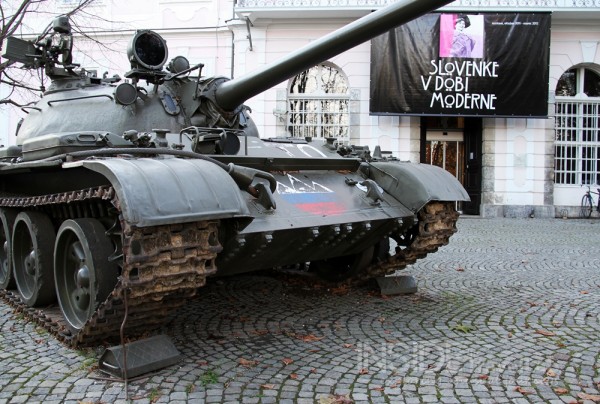
A Short History of Ljubljana
OK, here’s where we get serious again. For all the above-mentioned frivolity, the iron curtain is the real reason why I came to Ljubljana on that Iron Route Trip. Apologies if you know this already, but I’d started in Istanbul and travelled by InterRail up to Berlin in order to zigzag across the former iron curtain, the barrier that carved up Europe while I was at school.
Slovenia, and hence Ljubljana, and to an extent all of the former countries of Yugoslavia, formed a vital part of this route. But not, perhaps, for the reason you might imagine. Drop me a line if you want to hear the full story….
Slovenia is positioned right in the heart of Europe, surrounded by Italy, Austria, Hungary, and Croatia, with a small port at the Adriatic Sea. Surprisingly or not, this territory was inhabited as far back as 250,000 BC. The area around Ljubljana, however, was populated around 400BC when the Celts settled here.
Three centuries later, Julius Caesar took an interest in this territory and founded the town Emona on the left bank of Ljubljana. But the Roman reign didn’t last long. During the 6th century AD, the Huns and other Germanic tribes raided the territory, forcing the Romans to abandon the city.
Independent Ljubljana in 1144
In 1144, official records mention Ljubljana as an independent settlement – briefly. The Habsburgs invadee and ruled right the way up up until World War I. But plenty happens along the way…
In 1511, disaster strikes as an earthquake brings many buildings to the ground. The subsequent rebuild results in the city’s standout Baroque style.
In the 19th century, Slovenians, began pushing for independence. The territory recognised Slovenian as the national language, and founded the first college.
Alas, another earthquake hits Ljubljana in 1895, and the city is, once again, rebuilt, the Old Town gaining a series of Baroque castles to improve its looks.
After WWI and the collapse of the Austro-Hungarian Empire, Slovenia became part of the Kingdom of Yugoslavia, along with Croatia and Serbia. After experiencing relative prosperity under the Communist regime of Tito, it finally became independent on June 25, 1991.
Since then, Slovenia has become a member of both the EU and NATO. It is today a friendly European country that prides itself on its rich history and a small but gorgeous capital.
More About Travel in Central Europe
- Is Bratislava worth visiting?
- How to spend two days in Budapest
- A new form of slow travel in Austria
- The stories behind the UNESCO World Heritage Wieliczka Salt Mines
- Things no one tells you about visiting Auschwitz alone
- Traditional dishes in Austria: the 15 dishes you need to try
- Why summer in Austria will make you feel better
- 15 Beautiful lakes in Austria
- The best of Lech in Summer
- Exploring the Käsestrasse, Austria’s Cheese Road
- Dark tourism in Vienna: what you need to know

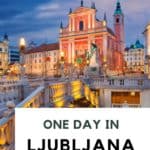
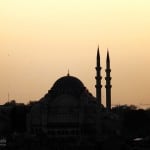
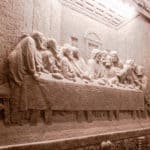
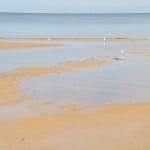
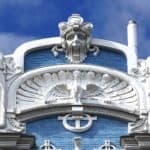
Yep, there’s beauty on almost every street corner. A complete contrast to Sofia, Bulgaria where I had to search heard to find something unusual or picturesque…
Hi, Abi
I was born in Ljubljana and we just moved a year ago to San Antonio, TX from there. I was happy to find this about my hometown and I really recommend it to everybody, but not only Ljubljana as a capital but also other beautiful places in Slovenia.
It is tiny country full of great places, very rich culture and amazing nature from the Adriatic Sea and Karst (Tuscany-like region) on one side to the Alps with beautiful National Park Triglav, lake Bled and rivers on the other side, to the hill country with numerous vineyards and by the way great wine and there is more and more. And what is the best , everything is very close because the country lies on the junction of different regions. From Ljubljana in the middle of the country you need about an hour to each direction and the scenery completely changes. It takes about 2,5 hours driving to Venice, Italy or about 3,5 hours driving to Vienna, Austria. Whatever time of the year you choose it is beautiful, people are nice and food is awesome.
I recommend some links to see more images and get more information about Slovenia:
http://www.visitljubljana.com/en/
http://www.slovenia.info/en/
or simply google Slovenia and view Images
Wish you a great vacation if you decide to go and combine Slovenia also with next country Croatia (especially their coast and islands) if you are there during spring or summer.
I travelled to Ljubljana but I was much younger at a time when regrettably, I hadn’t learned how to travel well. I feel I need to go back to explore this city in more depth because it is such a treasure